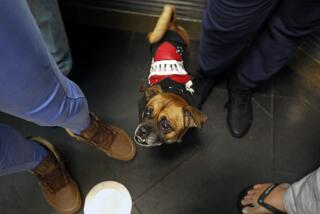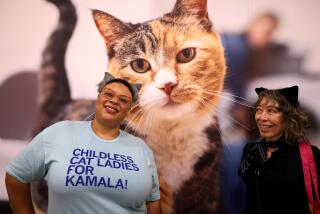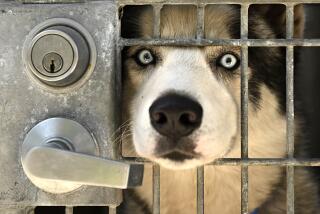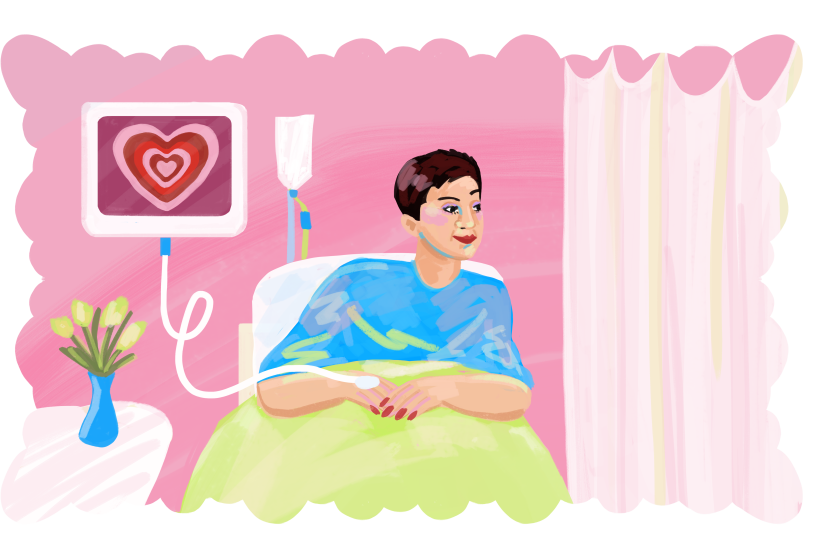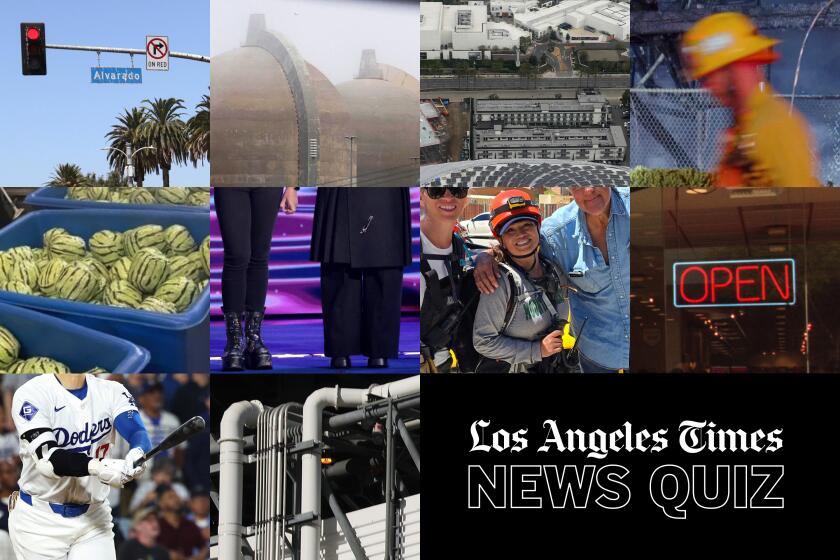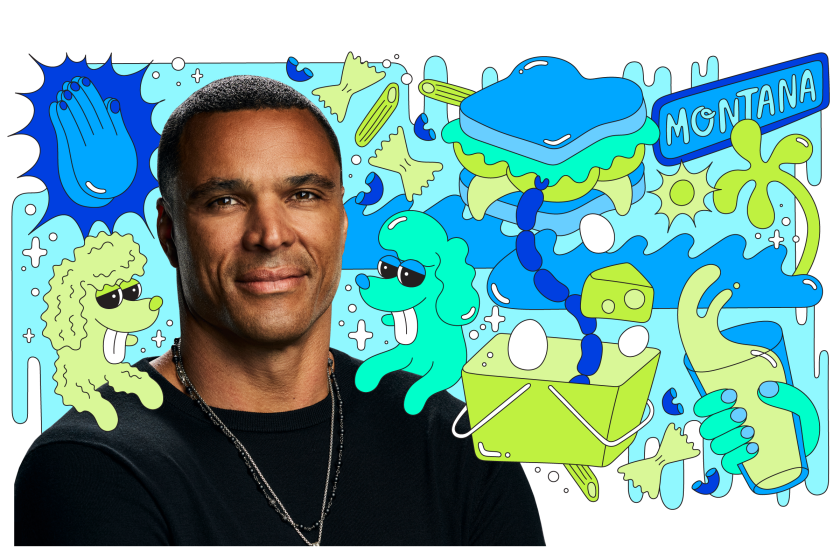How an amputee cat helped a San Diego veteran heal herself
The story of Sophia the Bionic Cat is a tech-geek’s fantasy and a survival saga. It is an inspirational pep talk and a made-for-TV movie just waiting to happen.
It is also a children’s book, which local author Karolyn Smith will be reading at 2 p.m. Saturday at the downtown San Diego Central Library. But more than anything, it is a love story. Combat-scarred veteran meets an abandoned disabled kitten on Facebook and life-changing magic ensues.
“I was in such a bad place. I remember thinking, ‘How am I going to get out of this?’” Smith said, remembering the day she happened upon the tiny calico kitten and her slightly bigger companion kitty on the San Diego Humane Society’s Facebook page.
“And then I saw that face, and I just felt something. And when you don’t usually feel much and you finally feel something, you kind of have to act on that.”
What happens when a broken human saves a three-legged kitten, and the kitten turns around and saves her? Here is the story behind the story.
Chapter 1: In the Army now
In 2001, the Santee-raised Smith was a competitive cyclist looking to do something bigger with her life. The terrorist attacks of 9/11 showed her just what that something would be. At 29, she enlisted in the Army. In April 2004, she was deployed to Baghdad.
For the next year, Smith served as a machine gunner with the 127th Military Police Company. In September 2004, Smith and her team leader were investigating a truck fire when the team leader was killed by a sniper. Seven months later, Smith and her team were on combat patrol when an IED attached to a light pole exploded. Her future sort of blew up, too.
“A bomb exploded and I inhaled the blast, and that’s about all I remember,” said Smith, who was in the turret on top of the armored Humvee. “We lost two people on that deployment, and I didn’t want to stay in Iraq. I was over it.”
Chapter 2: (Not) at ease
After the blast, Smith returned to San Diego, where she worked in the security industry and struggled with a mild traumatic brain injury, two blown discs in her back and post-traumatic stress. She was taking prescription painkillers and battling depression. It was hard for her to go out at night, deal with crowds or relate to anyone who wasn’t in the military.
“I had a very rough vernacular, like a sailor. It made people afraid to be around me. My family said I was so different when I came back, it was hard for them have conversations with me,” Smith said in an interview at her small Lakeside house, which is crammed to the gills with cat toys. “It made being in a relationship impossible, and I became very isolated.”
It went on like that until a dark day in 2014, when Smith went on social media and said, “I’m done.” Done with the pain. Done with what the pain medications were doing to her. Done with what life was doing to her. Then the first of two miraculous things happened.
A Facebook follower suggested Smith check out UCLA’s Operation Mend, a no-cost program that provides advanced medical and mental health treatments to post-9/11 service members and veterans. Through the program, Smith got the help she needed. Then it was time for the second miraculous thing. Enter Sophia.
Chapter 3: The power of cats
At the time, their names were Sprinkles and Leprechaun. One was a tiny calico kitten found in a field with the umbilical cord wrapped around her right hind leg. The other was a larger abandoned Bengal kitten who bonded with Sprinkles in the San Diego Humane Society’s kitten nursery during her tough recovery from surgery amputating the bottom part of her leg.
They were the first furry faces Smith saw when she hopped on the Humane Society’s Facebook page in the spring of 2014. They were available for adoption, and whoever took one had to take them both.
“I just looked at them and I thought, ‘I must have you,’” said Smith, who renamed the cats Sophia and Leonidas. “That first night they were here, Leo was breathing kind of heavily, and I was so worried, I didn’t sleep all night. But almost right away, they were running around everywhere. They were so hysterical, and they were better than any medication the VA could give me.”
Chapter 4: Paws for a cause
Sophia and Leonidas grew and their personalities blossomed. Leo turned out to be affectionate, protective and extremely obsessed with Smith’s kitchen blinds. (“That’s him,” Smith said, as the 22-pound cat batted noisily at the blinds. “That’s him all day.”) Sophia loves laps, her feathered cat toy and getting as close to Smith’s face as she possibly can.
Both cats excel at therapeutic purring and healing hilarity. But one of the best things Sophia did for Smith was allowing her owner to do a very big thing for her.
As she watched her three-legged cat make her way around the house, Smith wondered what she could do to help. She tried fitting Sophia’s stump with a doll shoe, which did not work. She contacted a Colorado company that made prosthetic limbs for dogs, but the expense would have been off the charts.
In late 2014, she ended up at San Diego’s Fab Lab, a community fabrication hub where technology lovers can create the gadgets of their dreams. Smith wondered if the Fab Lab could use a 3D printer to create an affordable removable prosthetic leg for Sophia. They could and they did. And they’re still doing it.
At a dainty 5½-pounds, Sophia is so petite, it has been tough to create a prosthesis that will stay in place without pinching her sensitive stump. While the Fab Lab works on a third prototype, Sophia is still getting used to the second one, which she can only wear for short periods of time. But in terms of impact, Sophia is already the best champion a human could have.
“I think this is a metaphor for my own struggle with the things that happened in Iraq that I couldn’t help,” Smith said, as Sophia curled up in her favorite spot on the couch. “On Facebook, I heard from a guy who is an amputee who said, ‘Every time I see Sophia with her prosthesis on, it makes me smile.’ I get a lot of emails like that. I didn’t know that dealing with her struggles and helping other people is what would help me the most.”
Chapter 5: Read all about it
Written by Smith and illustrated by San Diego artist Jim Busike, “Sophia the Bionic Cat” starts with Sophia abandoned in a dark field and ends with a triumphant Sophia happily flipping and hopping on her new leg. The real-life story is still being written.
With any luck, future chapters will show Sophia taking her healing purr and inspiring story to hospitalized children and others in need of some kitty therapy. It will show kids thinking prosthetic limbs are cool and high tech, instead of strange and scary. It will show Smith doing book signings and speaking engagements with an ease and confidence she could not have imagined in her pre-cat years.
But no one is thinking about endings right now. Sophia and her human are just getting started.
“Sophia is a message. When she was left in that field, she could have given up, but she didn’t. When you see her with her prosthesis, you start thinking about out-of-the-box solutions for your own problems. This is about those moments in life where you start to find yourself, and it’s showing how love and technology can help.”
Twitter: @karla_peterson
karla.peterson@sduniontribune.com
More to Read
Sign up for The Wild
We’ll help you find the best places to hike, bike and run, as well as the perfect silent spots for meditation and yoga.
You may occasionally receive promotional content from the Los Angeles Times.
